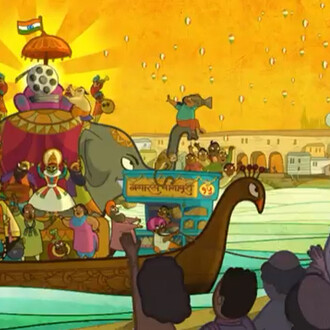The current exhibition presents an unpublished portrait of the driver from Biella, drawing on a rich collection of documents, photographs, and memorabilia that recount his racing career, mechanical expertise, and design achievements. Ten vehicles are on display, including the Alfa Romeo 8C 2300 Zagato—in which Trossi placed second in his debut Mille Miglia in 1932—and the iconic Monaco Trossi, whose design and front-mounted 16-cylinder radial engine evoke the look of a wingless aircraft.
MAUTO – Museo Nazionale dell’Automobile presents Carlo Felice Trossi. Unfinished hero, an exhibition dedicated to the multifaceted figure of the driver from Biella. Curated by historian and essayist Giordano Bruno Guerri, with artistic direction by Maurizio Cilli, and contributions from Francesco Foppiano for the boating and aeronautical sections, as well as Ilaria Pani and Davide Lorenzone – respectively Head of the Documentation Centre and the MAUTO Conservation and Restoration Centre – the exhibition offers a journey of discovery. It brings together cars, planes, boats, photographic records, drawings, and a rich collection of memorabilia that together recount not only the life of a great driver, but also that of a protagonist of his time – a man who embodied elegance, freedom, and intelligence during a period of delicate political, social, and cultural balance.
The exhibition will be open to the public from 15 May to 28 September 2025.
Carlo Felice Trossi
Carlo Felice Trossi, born in Biella in 1908 – made a Count for sporting merit in 1934 – was a singular hero of the twentieth century: a driver and aviator, designer and builder of cars and boats, and a business executive. He was one of the first presidents of Ferrari, and Enzo Ferrari himself described him as a man who “with extravagant and light-hearted ease did things that others would have judged impossible, both in life and on the track.” Closely associated with rationalist architecture and a personal friend of Pier Luigi Nervi, Trossi displayed a modern and cultured taste in his pursuits, which extended well beyond the world of sport.
The exhibition route
The exhibition is divided into five chapters – Biography, Competitions, Aeronautics, Nautics, and Design – each highlighting different facets of Carlo Felice Trossi’s personality and interests. The first chapter features an installation inspired by the albums created by Trossi’s mother, Clementina Sella, who meticulously collected and arranged articles and photographs over the years, often accompanied by personal notes. Drawing from this extraordinary family archive, a wall presents a visual collage that offers an intimate and multifaceted look at Trossi’s sporting achievements and personal life. The second chapter explores Trossi’s racing career, including hill climbs, road races, and international Grands Prix. The third chapter, dedicated to aeronautics, showcases Trossi’s passion for both civil and military aircraft, that he also owned, illustrated through extremely rare color photographs – displayed here for the first time – that allow us to appreciate the vibrant world of early aviation, typically remembered only in black and white. The fourth chapter focuses on boating, Trossi’s earliest passion, and the field in which he began contributing to the design of iconic watercraft. Finally, the fifth chapter is dedicated to automotive design and to the unmistakable sense of style and taste with which Trossi selected his cars, leaving a distinctive mark on every vehicle he chose.
Artworks
On display are photographs, projects, documents, licenses, accessories, helmets, tracksuits, and trophies, as well as nine iconic racing and touring cars. Also featured are the 1940 SIMAT scooter -Count Trossi owned one of only 30 produced-, an aircraft model, an aeronautical engine, a cinemobile, and a boat.
The cars on display range from the 1935 Monaco Trossi – a futuristic prototype designed by Augusto Monaco in collaboration with Carlo Felice Trossi – to the 1938 Alfa Romeo GP Type 158, known as the “Alfetta“; from the 1931 Alfa Romeo 8C 2300 Monza to the revolutionary 1936 Maserati 6 CM racing single-seater; from the 1930 Mercedes-Benz SSK to the 1942 Alfa Romeo 6C 2500 SS, onto which Trossi initially installed two headlights taken from his personal aircraft in place of the original central headlights; and from the 1932 Alfa Romeo Type B P3 to the rare 1934 Cattaneo Trossi, a fully functional miniature car. Finally, the 1932 Alfa Romeo 8C 2300 Zagato is exhibited – the car with which Trossi finished second in his first Mille Miglia that same year.
The section dedicated to boating features Mio Mao, a 7.2-metre mahogany runabout with a double cross-plating structure, built by the Baglietto shipyard between 1929 and 1930 for the Piaggio family.
A travelling cinema vehicle offers a glimpse into the era in which Trossi lived: the 1929 Fiat 521 Cinemobile. This rare example, built on a Fiat 521 chassis by Carrozzeria Fissore, was sent to Eritrea to serve as a mobile cinema during the Italian colonial period. Found years later, it still retains its original projector, which is now fully functional following meticulous restoration.














